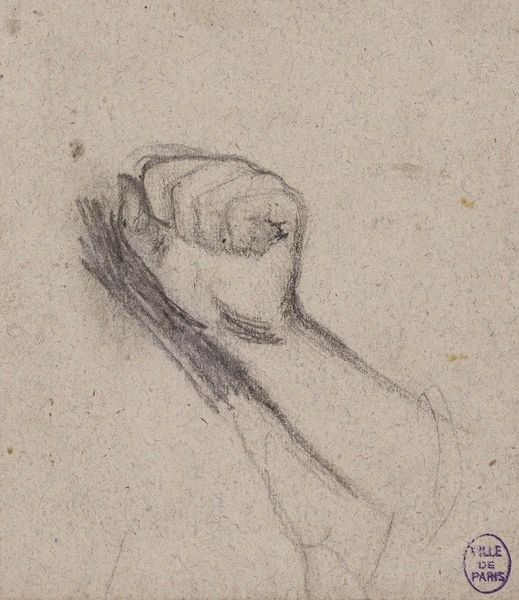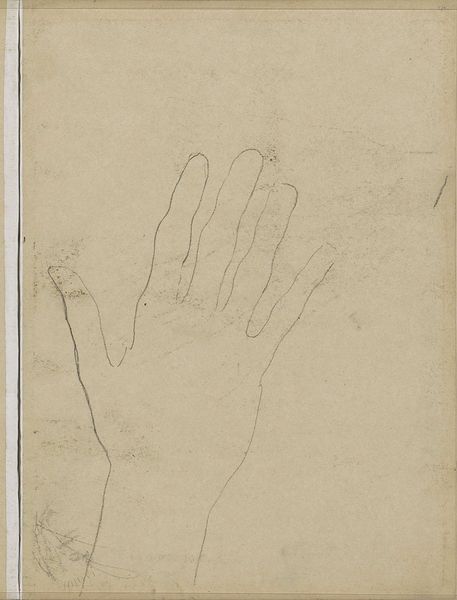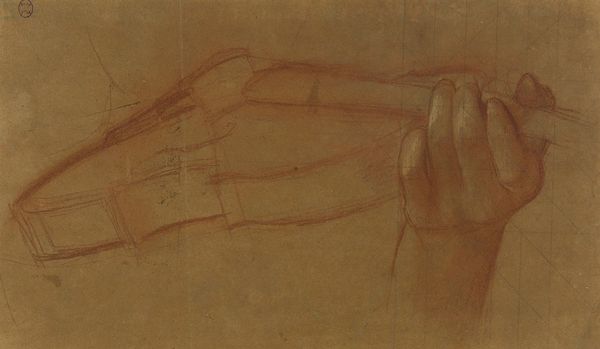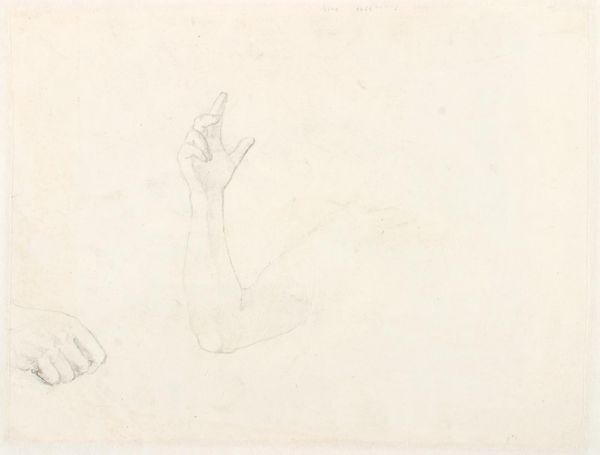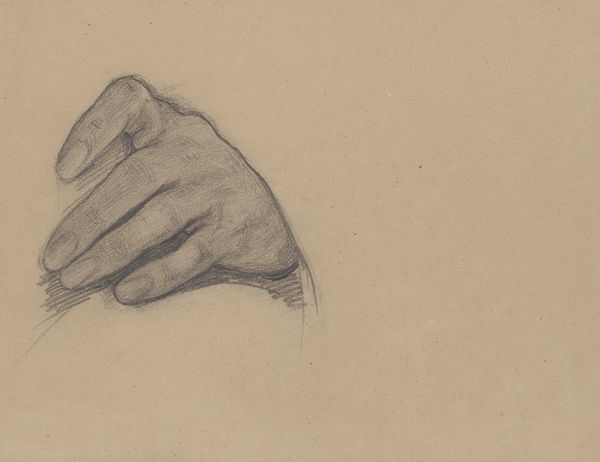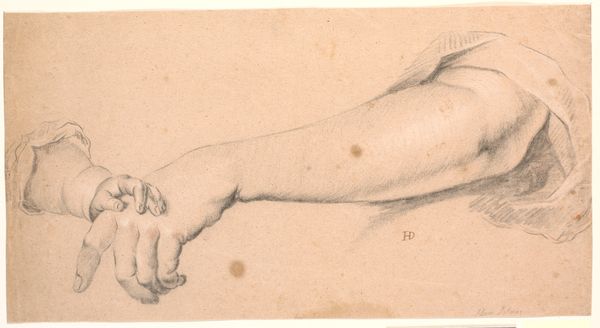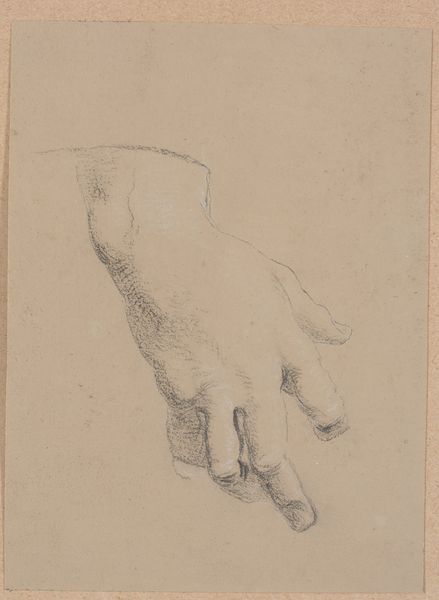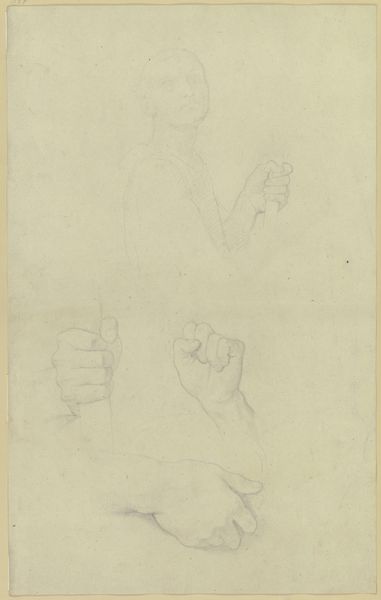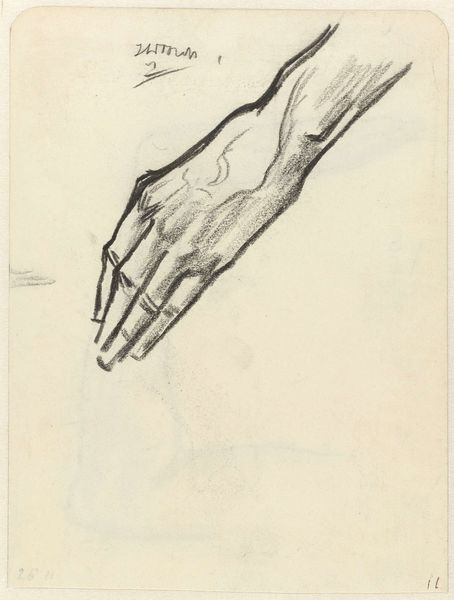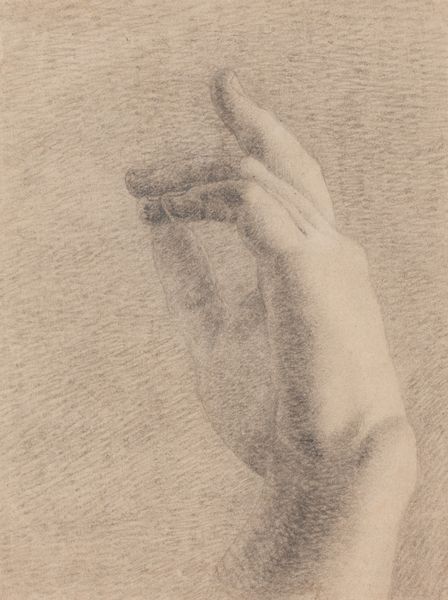![Study of an Arm [verso] by Guillaume Lethière](/_next/image?url=https%3A%2F%2Fd2w8kbdekdi1gv.cloudfront.net%2FeyJidWNrZXQiOiAiYXJ0ZXJhLWltYWdlcy1idWNrZXQiLCAia2V5IjogImFydHdvcmtzL2E4YmM5NjMzLWY3ODItNDJiZS05ZTRhLTQ3YTRhNmYyZjQ5ZC9hOGJjOTYzMy1mNzgyLTQyYmUtOWU0YS00N2E0YTZmMmY0OWRfZnVsbC5qcGciLCAiZWRpdHMiOiB7InJlc2l6ZSI6IHsid2lkdGgiOiAxOTIwLCAiaGVpZ2h0IjogMTkyMCwgImZpdCI6ICJpbnNpZGUifX19&w=3840&q=75)
drawing, dry-media, pencil
#
portrait
#
pencil drawn
#
drawing
#
charcoal drawing
#
figuration
#
form
#
dry-media
#
pencil
#
line
#
academic-art
#
realism
Dimensions: overall: 45.6 x 59.4 cm (17 15/16 x 23 3/8 in.)
Copyright: National Gallery of Art: CC0 1.0
Curator: Looking at this drawing by Guillaume Lethiére, created around 1812, I'm immediately struck by its almost sculptural quality despite being rendered simply with pencil. The arm is powerfully present. Editor: There's an arresting sense of movement and dynamism. The way that index finger extends, almost pointing towards some unseen truth, really grabs my attention. It reminds me of gestures in classical rhetoric. Curator: Indeed, that tension is very calculated. Lethiére, who directed the French Academy in Rome, instilled academic principles emphasizing ideal form and structure, echoing Neoclassical values that also served as important models for civic virtues within the turbulent French political scene. The focus on anatomical precision underscores this goal. Editor: Precisely. Note how the rendering emphasizes musculature and tendon structure. This pursuit of idealized anatomy extends well beyond mere physicality; here it seems to reference strength, determination and aspiration, like some character of mythological prowess from centuries ago. The raised index is itself an important signifier, representing authority or perhaps guidance in visual lexicons. Curator: We must not detach these pieces from institutions as agents of civic propaganda, specifically its utility under Napoleon. Art served a moral purpose. It was deployed as ideological currency across the republic, influencing norms through its presentation within the Academy. Editor: Interesting observation. Looking at this in context it becomes clear it exists not solely as an artistic statement. The academic pursuit Lethiére instilled created many standardized cultural emblems rooted specifically during and after France's revolution where the symbolism of hands carries an incredible load, signifying oaths, action, labor and even violence depending how depicted throughout countless works of the time. The rendering captures the very soul. Curator: Indeed, the placement of pieces in the public consciousness further highlights them in service of creating moral pillars as determined and guided by civic institutions during the fraught sociopolitical dynamics characterizing France at this stage. Editor: Overall, examining just how meticulously rendered is striking. One realizes this simple anatomical depiction conveys grand symbolic weights that resonate across contexts. Curator: I would agree. It reveals how profoundly academies molded even seemingly straightforward figure studies. Editor: Indeed. Now I cannot perceive the piece as a casual drawing rather more intentionally constructed from ground up within systems both creative and cultural!
Comments
No comments
Be the first to comment and join the conversation on the ultimate creative platform.
